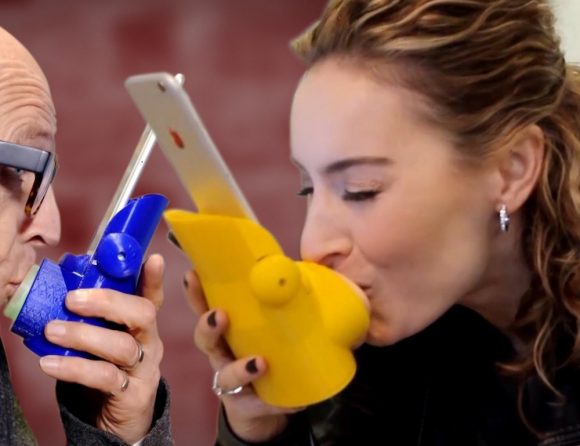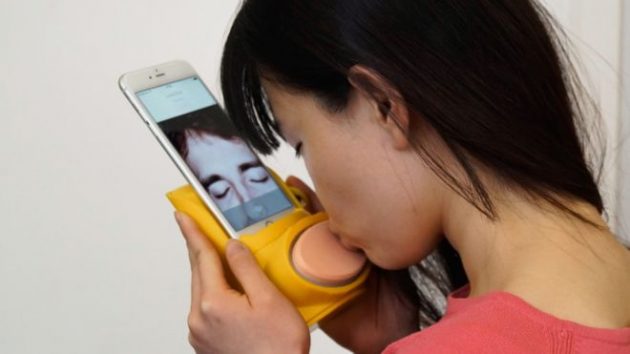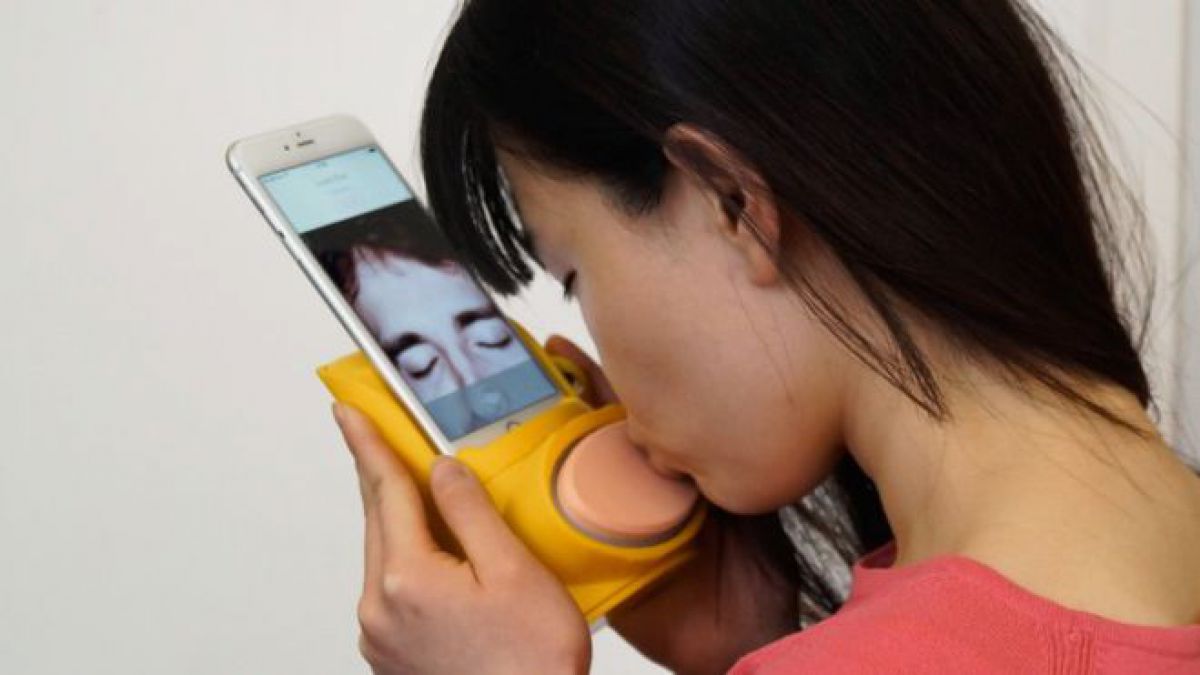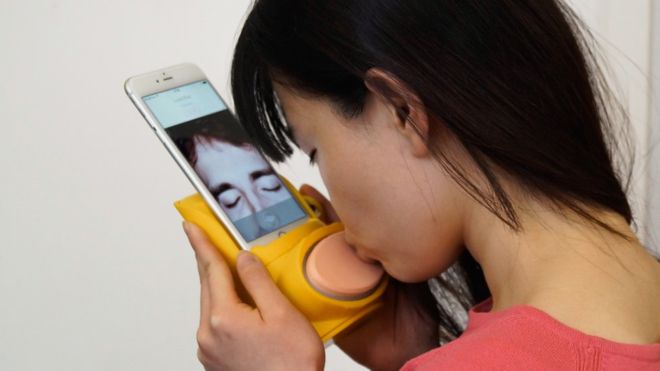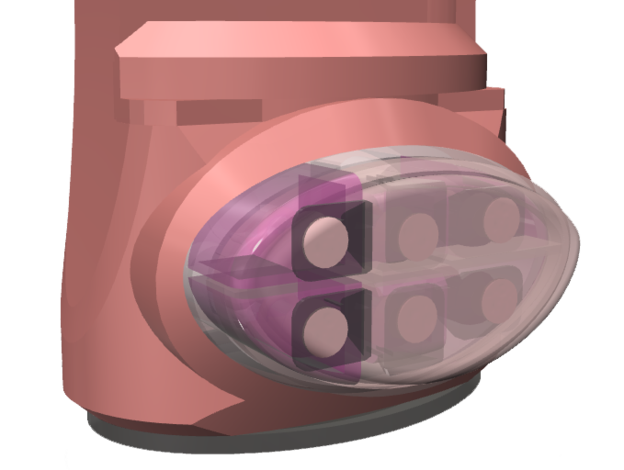
By Astrid Otal – 11 February 2017 – PlayGround
http://www.playgroundmag.net/futuro/sexo-robots-matrimonio-legal-2050-realdolls_0_1918608121.html
“En 2050 el sexo con robots será popular, las parejas humano-robot comunes y el matrimonio con robots legal”, aseguran estos expertos. De momento, los fabricantes de muñecas sexuales empiezan a usar Inteligencia Artificial para que las dolls simulen tener sentimientos
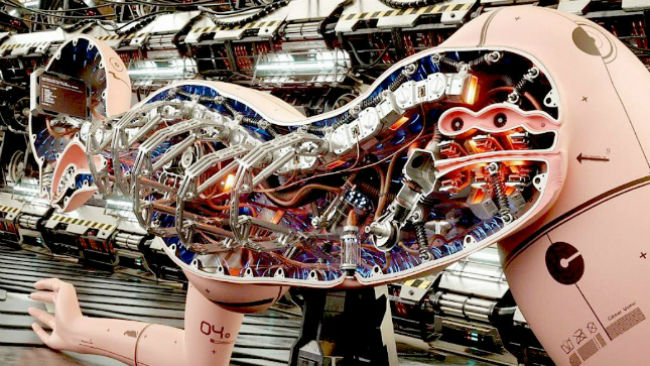
Hace veinte años, en el garaje de su casa, Matt McMullen —un joven artista de 26 años por aquel entonces— diseñó una muñeca femenina, le hizo fotografías y las colgó en Internet. Alguien que las vio le mandó un email para pedirle un encargo: quería una, pero a tamaño real y con la que pudiera practicar sexo.
Desde aquel primer maniquí sexy y asombrosamente realista, que para él era poco más que una broma, McMullen comprobó que existen miles de personas dispuestas a pagar varios miles de dólares para hacerse con una muñeca sexual. Abyss Creation, la empresa que levantó en un polígono industrial de San Marcos (California), ha vendido cerca de 8.000 unidades desde su fundación. Miles de real dolls que no son rasposos trozos de plástico, sino ‘chicas’ de piel de silicona para que su tacto no sea frío, con pecas, maquillaje, pechos de diferentes formas y tamaños a los que nunca afecta la ley de la gravedad y con un esqueleto metálico incorporado que les permite adaptar y mantener todo tipo de posturas. Muy pronto, además, sus clientes podrán tener conversaciones con sus dolls.
Y no, no nos referimos a ‘hablar solos’ mientras acarician el pelo de ellas.
“En 2050, el sexo con robots será popular, las parejas humano-robot comunes y el matrimonio entre ambos se aprobará en diferentes partes del mundo” (David Levy)

El nuevo proyecto de McMullen, que cuenta que lanzará al mercado a finales de año, promete revolucionar el mercado del sexo con no humanos. Su empresa ha trabajado con ingenieros en robótica para desarrollar una inteligencia artificial que integrará en sus dolls.
Matt quiere hacer posible que sus ‘chicas’ inertes hablen y recuerden, además de conseguir que puedan pestañear y mover la cabeza y los labios siguiendo las frases que pronuncian.
La innovación abre las puertas a una predicción que David Levy, especialista en Inteligencia Artificial, realizaba recientemente durante el segundo congreso Love and Sex With Robots celebrado en la Goldsmith University de Londres: que en 2050 el sexo con robots será popular, las parejas humano-robot comunes y el matrimonio con robots se aprobará en diferentes partes del mundo.
¿Suena difícil de creer? Bueno, expertos como Adrian Cheok, profesor de computación en la City University de Londres y director del Mixed Reality Lab, opinan que esa predicción no es para nada disparatada.
“Puede parecer una afirmación extravagante, porque estamos hablando a 35 años vista. Pero hace 35 años la gente pensaba que el matrimonio homosexual era intolerable”, comenta Cheok en declaraciones a Quartz. “Hasta los años 70, algunos Estados de EEUU no permitían el matrimonio entre ciudadanos blancos y negros. La sociedad progresa y cambia muy rápidamente”.
Aunque Cheok reconoce que los robots sexuales son, mayormente, una proyección de las fantasías sexuales masculinas más sexistas, a su juicio los matrimonios entre humanos y robots podría tener un efecto abrumadoramente positivo en la sociedad. “La gente asume que todo el mundo puede casarse, tener sexo, enamorarse. Pero en la realidad muchos no pueden”, señala. Pero incluso quienes pueden, incide Cheok, podrían encontrar valor en opciones diferentes. “Muchos matrimonios humanos son muy infelices. Si consideramos el contexto de un mal matrimonio, un robot siempre será mejor que un humano”.
I. Me siento atraído por un robot

“La inteligencia artificial dará un día a los robots un mayor poder de razonamiento del que hoy tienen. Y solo hay que considerar qué cosas hacen que un ser humano se fije en otro para replicarlas. ¿Cómo nos sentimos atraídos por otra persona? Belleza, inteligencia, riqueza, integridad personal… todo eso se aplicará a las relaciones robot-humanas. Un robot simulará corresponder los afectos humanos, y eso construirá una relación. Se creará una creíble apariencia de reciprocidad”, nos dice Chamari Edirisinghe, ingeniera informática del Imagineering Institute.
El futuro de las relaciones sexo-emocionales con robots avanza hacia las programaciones a la carta. ¿Deseas un sexbot tímido o extrovertido? ¿Inocente o intelectual? ¿Voluptuosamente sensual o más frío? Además de poder elegir una cara, un cuerpo o una clase de pezón, se podrán combinar diferentes características para configurar una personalidad que se va haciendo única debido a que el propio autómata aprende por su cuenta con cada conversación que mantiene.
¿Te ha ido bien en el trabajo?
¿Cómo estás hoy?
¿Eres feliz?
Acércate, un poco más cerca.
Un robot simulará corresponder los afectos humanos, y eso construirá una relación
“ La intimidad viene más por la forma en la que conectamos con alguien. Con los seres humanos, incluso si un encuentro sexual con otra persona es muy breve, sin ninguna otra forma de interacción excepto la sexual, sigue siendo íntimo. Con los robots sexuales estamos tratando de hacer la masturbación o el placer sexual individual más íntimo. Proporcionar una experiencia de inmersión será fundamental para que el usuario sienta que los sexbots están comprometidos”, explica Lynne Hall, investigadora del Departamento de Ciencias Informáticas de la Universidad de Sunderland.
Así que si el robot recuerda que te gustan las flores amarillas y comer pizza, parecerá un poco más de carne y hueso.
Si se gira para preguntarte cómo estás, pensarás que se preocupa.
Y si sus dedos te llevan a orgasmos superlativos y luego reís, lo sentirás como complicidad.
No tienen sentimientos, porque solo son un conjunto de ceros y unos, pero el desarrollo de su diseño consiste en crear la ilusión de que los poseen.
II. Quiénes guardarán un sexbot en el armario

Lars y una chica de verdad, la película de Craig Gillespie en la que Ryan Gosling interpreta a un hombre retraído que pasea, cuida y mima a una de las muñecas que hizo para el filme McMullen, puede dar una imagen equivocada de quiénes adquieren a las dolls de silicona o, en el futuro, a los sexbots. Para empezar porque, de momento, la mayoría de los clientes no se encuentran en la treintena, sino que están entre sus 55 y 65 primaveras.
“No es fácil esbozar un perfil”, puntualiza McMullen. “Normalmente se trata de personas que se sienten solas en su vida o arrastran mucho dolor de relaciones pasadas y la idea de la muñeca y los robots es segura para ellos para no sufrir otra decepción”. Pero quedarnos con esta imagen sería injusta, por demasiado reduccionista.
Padres de hijos autistas o con discapacidades compran estos productos para que puedan satisfacer sus necesidades. Psiquiatras los tienen en sus clínicas para tratar a acosadores sexuales. Parejas que quieren mejorar sus relaciones sexuales los utilizan. Vince Neil, el que fuera cantante de la banda de hard rock Mötley Crüe, se hizo con una.
La idea de la muñeca y los robots es segura para ellos para no sufrir otra decepción
Cualquiera, sin un perfil determinado, pero con las ganas de fundirse entre 5.000 y 10.000 dólares porque le da la gana, puede tener una real doll en su alcoba. O uno. Porque los male dolls también existen, aunque las mujeres representan un porcentaje mínimo en el volumen de las compras. Un 10%.
Algunos achacan este uso descompensado a una forma distinta de experimentar las relaciones. “Creo que en los hombres, la vista y el poder tocar juegan un papel clave mientras que las mujeres tiene mayor peso la fantasía y la imaginación, no solo lo físico”, opina McMullen, quien tiene la intención de desarrollar versiones masculinas de sus robots, pero más adelante.
Para otras voces, sin embargo, ese desequilibrio se debe a dos causas: un problema de género que impide a las mujeres liberarse sexualmente, sumado a que los robots sexuales, como gran parte de la tecnología que usamos hoy en día, han sido diseñados “por hombres y para hombres”, como señala Kate Devlin, feminista, experta en IA y defensora del uso de sexbots.
“ Una máquina es una pizarra en blanco. La sociedad se está replanteando el dualismo sexo/género. ¿Por qué un robot sexual debería ser binario? ¿Por qué no se exploran nuevas ideas inclusivas y de cambio social?”, plantea Devlin en uno de sus artículos.
III. El momento en el que un robot te rompe el corazón
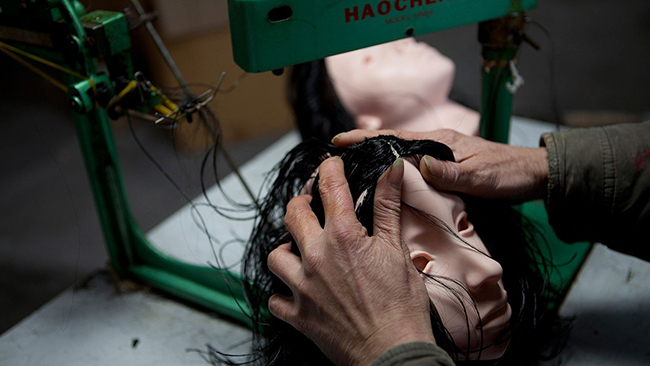
Con la inminente aparición de esta clase autómatas diseñados para el sexo y el amor, surgen las primeras cuestiones morales. Cuestiones como calibrar si estas tecnologías pueden existir al margen de las leyes que regulan las relaciones sexuales entre humanos. Por ejemplo, ¿debería ser ilegal fabricar muñecas sexuales con aspecto de niñas? ¿O robots de tallas anoréxicas? ¿Deberían descartarse los encargos que piden copias exactas de personas reales? ¿Debería programarse a los robots para que tuvieran una especie de ‘conciencia’ moral?
Oliver Bendel, filósofo y científico informático alemán, recuerda que el mes pasado, en el congreso Love and Sex with Robots, le hicieron las siguientes preguntas: ¿Es posible serle infiel a un humano con un robot sexual? ¿Debería un hombre o una mujer sentirse celoso por el affaire de su pareja con un autómata?
Su respuesta es que, a medida en que se avance en la sofisticación de estos robots, a medida que se mejore su capacidad de habla y sus movimientos, todavía limitados, la posibilidad de los celos y la sensación de infidelidad es inevitable.
Bendel subraya que los robots pueden hacernos sufrir a nosotros y a otros. “Con su cuerpo —con los miembros que lo componen— pueden dañarnos físicamente mientras se usan y sus capacidades lingüísticas pueden ofendernos con ciertas palabras o diciendo la verdad o la mentira”, manifiesta. Pueden generarnos incluso un doloroso sentimiento de frustración al caer nosotros en la cuenta de que nunca nos amarán realmente. Para él, los sexbots nunca serán esos compañeros perfectos libres de riesgos que dibujan otros.
Se recuerda que en 1997, cuando se comenzaban a vender las real dolls, Matt McMullen acudió al espectáculo televisivo de Howard Stern. Después de prometerle que le fabricaría una muñeca y entregársela, Stern declaró: “¡De las mejores relaciones sexuales que he mantenido en mi vida. Se siente que con una mujer de verdad!”.
Posiblemente aquella afirmación estuviera en el guión, fuera parte del show, pero 20 años después, a punto de darse un paso definitivo hacia los robots sexuales con inteligencia artificial, brota la duda de si reemplazarán a las personas. “Creo que en algunos casos sí, pero no serán muchos. Los robots no están diseñados para reemplazar a las personas sino para ser una alternativa y una experiencia”, aclara McMullen. “ Muchos me preguntan si pudiendo tener sexbots atractivos, como Scarlett Johansson o Brad Pitt, dejaremos de preferir la relación con los humanos. Es obvio que todos tenemos ideales, pero se nos olvida que existen conexiones todavía más importantes que no surgen del aspecto”.









